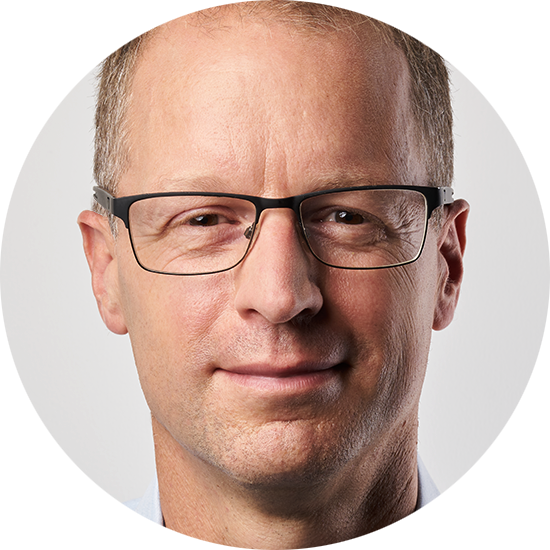

LIFE & TRANSITION
What do you want from life?
A structured approach, based on evidence, can help you find a better answer to this difficult question.
My aim is to help professionals to use the success they’ve earned to live the life they want to lead. But figuring out exactly what that life is can be harder than we might at first think.
The lying mind
I’ve reviewed elsewhere the work of Daniel Gilbert, which shows how bad we are at predicting what we’ll want. On a related theme, Daniel Kahneman, in Thinking Fast and Slow, shows how most of our thinking is driven by our instinctive system 1 as opposed to our reflective and rational system 2. As Yale’s Laurie Santos puts it: what if our minds are lying to us, leading us away from what really makes us happy?
The uncomfortable truth is that we tend to want what we really don’t want and not want what we really do. How do we overcome this?
In my The Life Factor e-book, I set out a four stage process, which I summarise in this article. You can get a free copy of the e-book by signing up for my regular email newsletter. The e-book references the research basis for the process. Here I’m just going to summarise it. If you’ve already signed up, then you’ll find a link to the e-book at the bottom of a recent newsletter.
1. Use data on what makes people happy
Most life visioning exercises start with you reflecting inwards to find your true self. What are your values, what makes you happy? Self-reflection has its place, but our imagination is so unreliable that projections from such a process are unlikely to be worth the paper they’re written on. Is the memory of what’s made us happy in the past any better? Not much. We wrongly think of our memory and imagination as data and prediction machines respectively. However, they’d more accurately be described as storytellers. Constantly weaving and reinforcing a narrative about ourselves and our lives.
Our minds are so unreliable that Daniel Gilbert suggests the best starting point is data about the things that make other people happy. This is because research shows that, on this matter, we’re more similar than different. There are lots of different frameworks about what makes people happy, but they all tend to amount to pretty much the same set of things:
- Health — absence of physical ailments and excessive mental stress, a sense of vitality.
- Autonomy — the ability to control our time and activity, and to have agency over decision making in our lives and work.
- Mastery — being good at something, learning and developing expertise, being in flow.
- Purpose — working towards and achieving goals that we care about.
- Connection — strong personal relationships, social contact, working in a team.
- Meaning — being involved in something bigger than ourselves, helping others.
- Enjoyment — day-to-day activities that give joy, laughter, pleasure, happiness.
What’s notable is what’s not on this list. Much of what we devote our professional lives striving for: money, status, power. It’s a cliché that intrinsic rather than extrinsic factors make for a fulfilling life. Or at least it would be if we actually lived by it.
Most people want these things, so it’s likely you will too. By all means figure out your own particular flavour. But be aware that your memories of what you enjoy will be distorted by your storytelling mind. Your mind may spin a tale about things you think you ought to enjoy rather what you really do. To guard against this make any data as contemporaneous as possible. If you feel in flow, note down in the moment what you’re doing and what contributed to that. A period of diary-keeping with this in mind can help provide data that is less distorted by the lens of memory. Maybe ask other people (whose motives and judgement you trust) to tell you when they see you at your happiest.
2. Tame your intuition with a structured approach
Daniel Kahneman’s antidote to system 1 decision making is to put system 2 in charge. Establish half a dozen clear criteria for your decision ahead of scoring the options. This might be built directly off the seven ‘happiness factors’ outlined above. Or it can be your own list tailored to the decision you’re making or taking into account evidence on your own particular preferences. Be as specific as possible about what you mean by each factor, how you will score them, to minimise your ability to retrofit an answer.
The point of structured thinking is to try to reverse your mind’s normal way of operating. The mind’s default mode is to decide on the answer and then find the reasoning to support it. You want to try to do things the other way round as much as possible.
3. Create a range of options for your future
This is familiar territory. Let your mind roam about things you might want to do. This is related to Herminia Ibarra’s concept of ‘possible selves’. This will likely include lives very similar to the one that you are living today, but also some radical alternatives. There are many tools and techniques for drawing out these possible selves. I describe a number of them in my e-book. And this is an area where you can let your imagination roam. But also use practical approaches. Speak to people whose lives you admire, try to find out the reality of how much they enjoy it and why.
Make sure you draw out the personal as well as the professional dimensions of your vision of a life well lived. You need a number of options to compare. The contrasts between alternatives will be educational and will help clarify your thinking. At this stage don’t try to home in on a single answer. You just can’t reliably think your way to such an answer.
Once you’ve got your options, evaluate them against your criteria, applying your structured thinking method. Score where you are today and compare against your range of alternative life options. Score every option across each criterion before moving onto the next criterion. This avoids halo effects: the tendency to perpetuate good or bad scores across an option, anchored by the outcome of the early criteria evaluated.
Now see what your scores tell you. There will be some duds. The scoring system will likely identify some fantasies that had better remain just that. You can discard them. There may be a clear leader, but don’t declare the winner too soon. Take a number of the options forward to the next stage.
4. Experiment with living your future life today
Given how bad we are at knowing what we want, there is no substitute for experimentation. How sad to dream of a life as an oenologist in Tuscany only to find out in reality that you can’t bear mosquitos.
Herminia Ibarra talks about constructing experiments to ‘try on’ a new identity. It’s best to trial more than one identity at a time to enable comparisons. The experimental approach brings three great benefits:
- It immediately enhances wellbeing.
- It creates motivation for your road to financial freedom.
- It distinguishes fantasy from reality — do you really want to do what you think you want to do?
I’ve always used New Year’s experiments to help with this. There’s some evidence in favour of the ‘fresh start’ effect of a new year. But my own experience is that it only really works with goals that I view as positive opportunities, growth goals. Disciplinarian resolutions have never worked for me. So I always thought of these as New Year’s experiments rather than resolutions. As opportunities to explore new aspects of my personality and to develop new interests.
Experiments give you live data to learn from and to help you adjust your evaluation. You will experience surprises along the way. Some of my experiments turned out to be things I thought I ought to want to do rather than actually wanted to do (completing a triathlon, reading Dickens). I dropped them as soon as I realised that fact, without self-recrimination. Others, such as wine tasting, I found I enjoyed as an occasional pastime, but no more than that. Other experiments took on a life of their own: part-time working, cycling, live football. But in each case I went with the flow, based on the results of the experiment, rather than treating it as a trial of willpower.
Your experiments will tell you what works and what doesn’t. You can discard the failures and deepen your investment in the successes. Over time, you find this process of experimentation of itself forms part of the process of moving your life towards the one you want to lead.
A messy and lengthy process
Figuring out what you want from life isn’t a case of inwards reflection to obtain pure insight into your one true self. Such a self probably doesn’t exist. We’re complex multi-layered beings and we evolve over time. But we have to start somewhere and imagination has to play a role. But we need to supplement it by data: on what makes most people happy as well as our guesses at what applies uniquely to us. A structured approach to evaluation helps prioritise our rational and reflective mind over its trigger-happy emotional sibling. And finally, experimentation is the only way to test whether, empirically, we’ll enjoy what we’ve come up with.
Figuring out what you want with life is not a simple linear process. It’s messy and iterative, and requires engagement with the real world. It can’t be done in our heads. It also takes time, in fact perhaps the search never ends. But done the right way, the exploration of what we want from life is part of what gets us to a life well lived.
